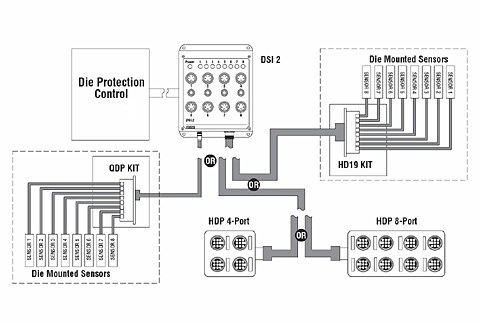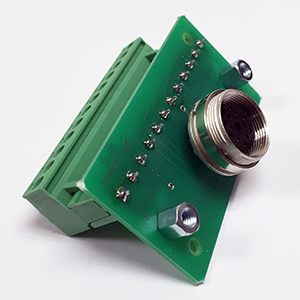100 Discovery Way, Unit 110, Acton, MA 01720 US.
Mon-Fri, 8:00 AM - 5:00 PM (GMT-5)
Die Protection Sensors & Accessories
Wintriss Controls Group offers a complete line of die protection sensors for in-die use. These sensors are rugged, shock resistant, and sealed against the environment. Sensors are available to detect everything from end of coil, to misfeed, to part ejection.
Inductive Proximity Sensors
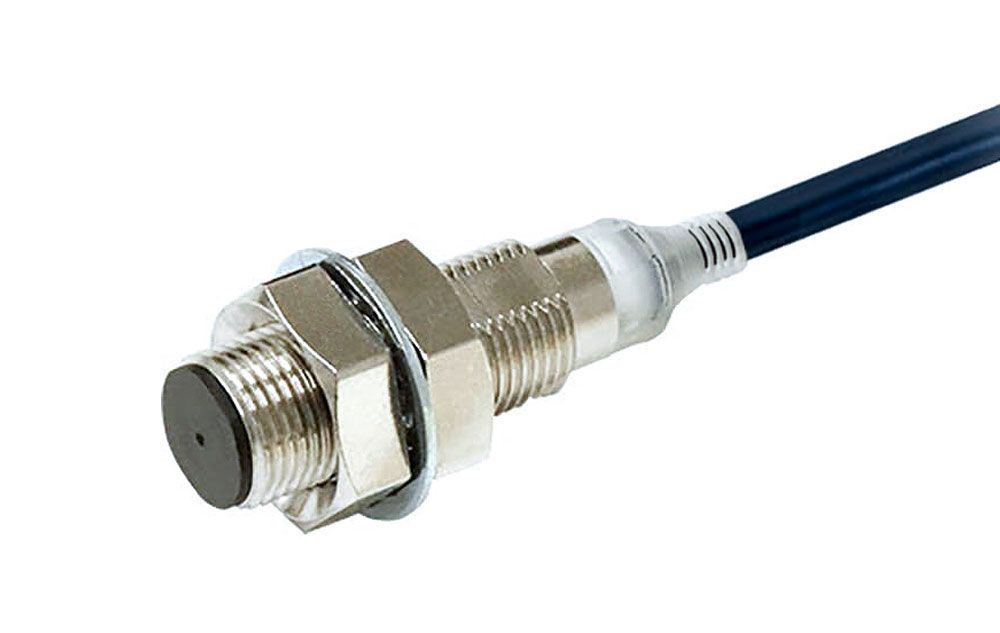
Inductive proximity sensors can detect, without physical contact, the presence of a metallic object. When power is applied to
the sensor, an invisible sensing field emanates from the face of the sensor. A metallic object entering this field is detected
by the sensor.
The proximity sensors offered by Wintriss Controls Group are excellent sensors for in-die use. Sensing ranges and operating characteristics are unaffected by lubricants and other non-metallic contaminants. In addition, proximity sensors are the most accurate sensors commonly used for die protection. With trip-point repeatability as small as 0.0004 in (0.01 mm), they are more than accurate enough for detecting die malfunctions.
Wintriss offers proximity sensors in two sizes - 8mm diameter (with a 0.060" sensing range) and 12mm diameter (with a 0.100" sensing range). They are available with connectors (to plug directly into the DSI2) or without (for use with the QDP or HD-19 kits described below). Proximity sensors with connectors are available wired for either normally open (N/O) or normally closed (N/C) operation.
Non-Ferrous Inductive Proximity Sensors
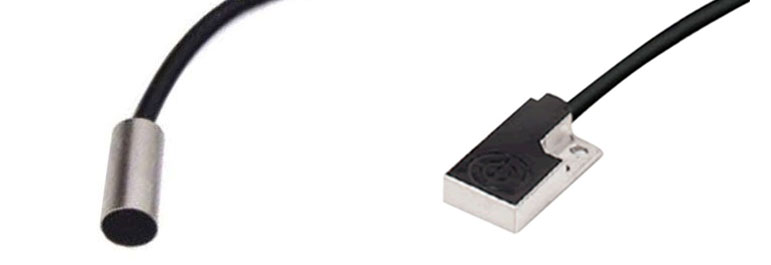
General purpose proximity sensors are best at detecting mild steel. They are able to detect non-ferrous metals at a reduced distance. However, in certain demanding applications, traditional proximity sensors actually detect the die steel rather than the target, so Wintriss is offering a series of -separate-amplifier- proximity sensors designed to detect non ferrous metals.
Photoelectric sensors
Photosensors consist of an emitter and receiver in either separate housings (through-beam photosensors) or in a common housing
(reflective photosensors). The emitter converts electrical energy into light; the receiver detects the light from the emitter
and sends an electrical signal to the die protection control. Sensors have built-in cross-talk
prevention that allows sensors to be installed next to each other without mutual interference.
Wintriss offer several types of photosensors for general purpose die protection:
Through-Beam Photosensor
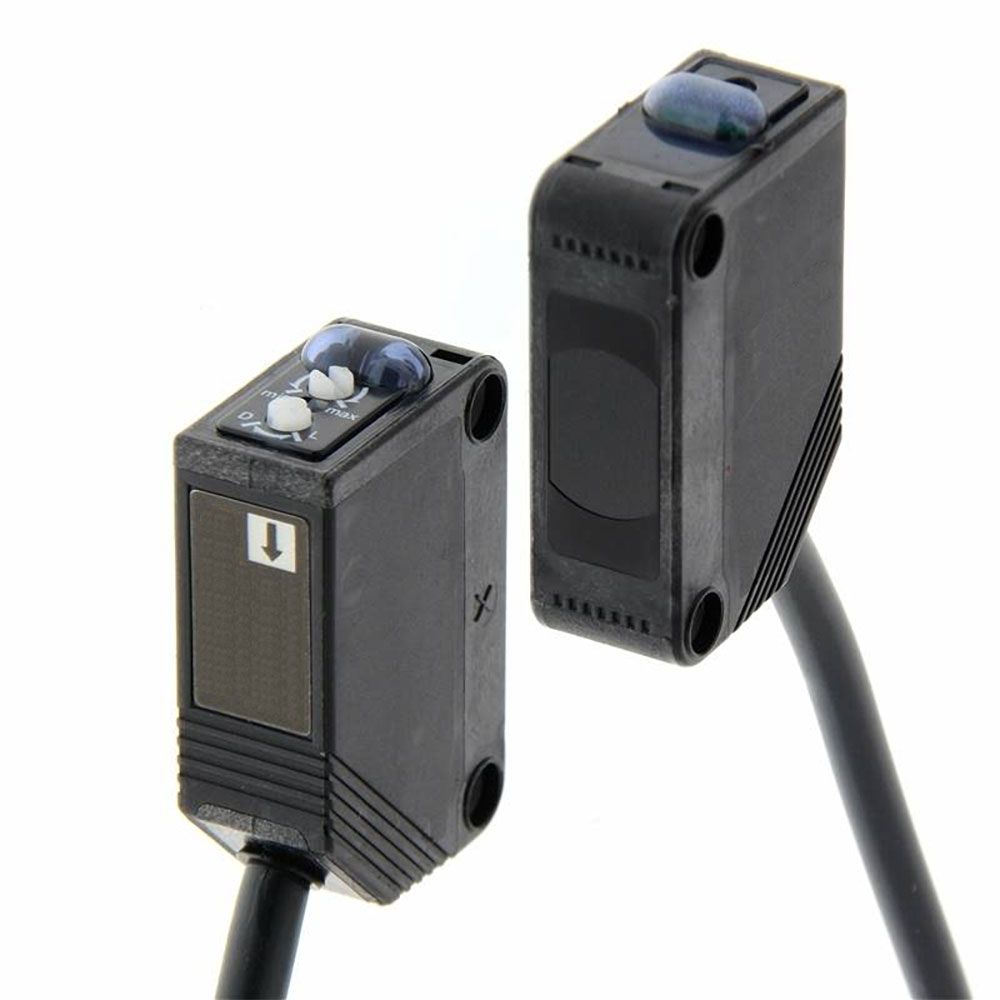
The through-Beam photosensor is a general-purpose photosensor with a separate emitter and receiver. Our sensor has a huge 30M range.
When this sensor is installed with the emitter and receiver less than 30M apart, the unused range (also
called the “excess gain”) provides enough power to enable the sensor to shine right through lubricant and other contaminants.
The sensor has a switch to select light-on or dark-on operating mode. Use the dark-on (beam break) mode for detecting part or slug
ejection, or shortfeed. Use the light-on (beam make) mode for detecting a hole in the strip. The uses an infrared red beam to
maximize it's ability to operate in an oily environment
Diffuse Reflective Photosensors
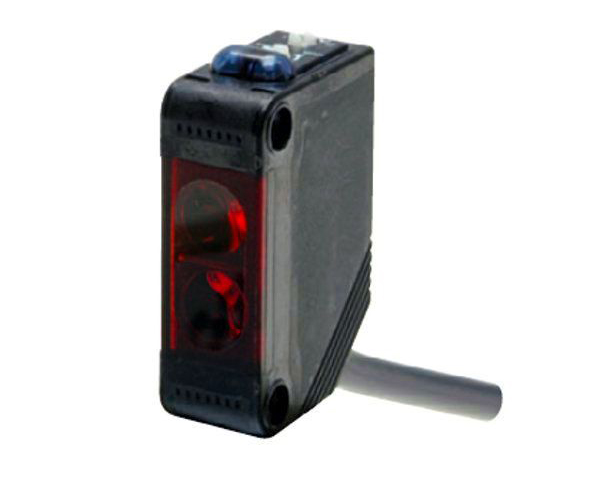
Diffuse Reflective Sensors are primarily used to detect part ejection. These sensors are extra sensitive, so they can be used for detecting small, fast-moving parts. Care should be taken when installing diffuse reflective sensors to ensure that background objects do not cause accidental actuation.
Use the short-ranged diffuse reflective sensor for applications where the part passes close to the sensor and where maximum background suppression is required. Use the longer range diffuse reflective sensor for general part ejection detection. Both sensors use infrared light to minimize false actuations caused by oil in the sensing field.
Distance-Settable Reflective Sensor
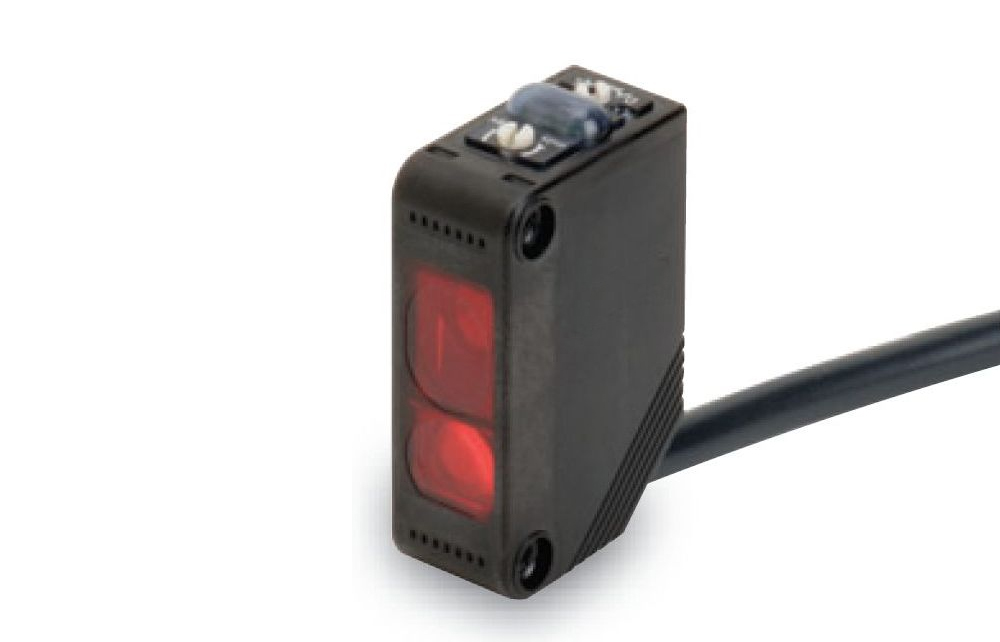
While diffuse reflective sensors remain a popular choice for general purpose part ejection detection, they are ineffective when the target object passes close to a background. The distance-settable reflective sensor has the ability to "tune" out the background and only detect objects in the foreground.
Electromechanical Sensors
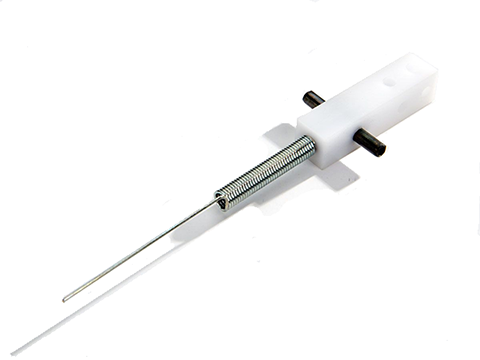
For over 60 years, these simple, dependable, time-honored electromechanical sensors have been protecting dies from damage. Even today, there are applications where a simple electromechanical sensor is the most reliable solution
Wintriss offers both general purpose and special purpose designs that have been on the job since the 1950s.
Die Wiring Accessories
The HD19 Kit enables you to connect up to eight die-mounted sensors to your DiPro Sensor Interface with one heavy duty cable, reducing setup time and virtually eliminating sensor wiring errors during setup. The HD19 kit also helps to extend sensor life by eliminating the number-one cause of sensor failure: damaged cables. When die-mounted sensors have to be plugged into a press-mounted interface box, it is necessary to keep long sensor cables coiled up on the die. Often, these cables are damaged while the die is being handled.
With the HD19 Kit, the main cable stays with the press, and sensor cables on the die are kept as short as possible. The HD19 Kit is designed to be installed in a user-supplied, die-mounted enclosure. The kit consists of a circuit board with a 19-pin heavy-duty M23 connector on one side and a terminal strip with removable connector on the other side.
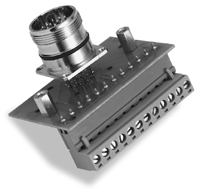
HD-19 Kit
Cables are available in three lengths and must be ordered separately. For added convenience and simplicity, another option is the HDP (Heavy Duty Plug). This is a hermetically sealed junction box that can be mounted directly on or near the die without the need for a PC board or enclosure. It's available in either a 4 or 8 port configuration and can only be used with HD19 cables. It connects to the DSI-2 through a 19-pin M23 connector. Sensors plug directly into the HDP using either a straight or 90- degree mating connector.
The QDP Kit functions like the HD19 Kit, except its cables and connectors are not as heavy duty. It is ideal for applications where cost is a factor or when die changes are less frequent and activity around the press or die is limited. The QDP Kit consists of a PC board, 12-pin connector and removable terminal strip. It is designed to be mounted in a user-supplied die-mounted enclosure.
QDP Cables are available in three lengths (5', 10', and 15'), and must be ordered separately.
Die-Mount Junction Boxes
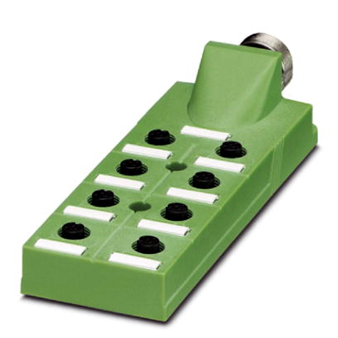
For added convenience and simplicity, another option is the HDP (Heavy Duty Plug). This is a hermetically sealed junction box that can be mounted directly on or near the die without the need for a PC board or enclosure. It its available in either a 4 or 8 port configuration and can only be used with HD19 cables. Sensors plug directly into the HDP using either a straight or 90° mating connector.
© Copyright 2021 Wintriss Controls Group LLC - All Rights Reserved
